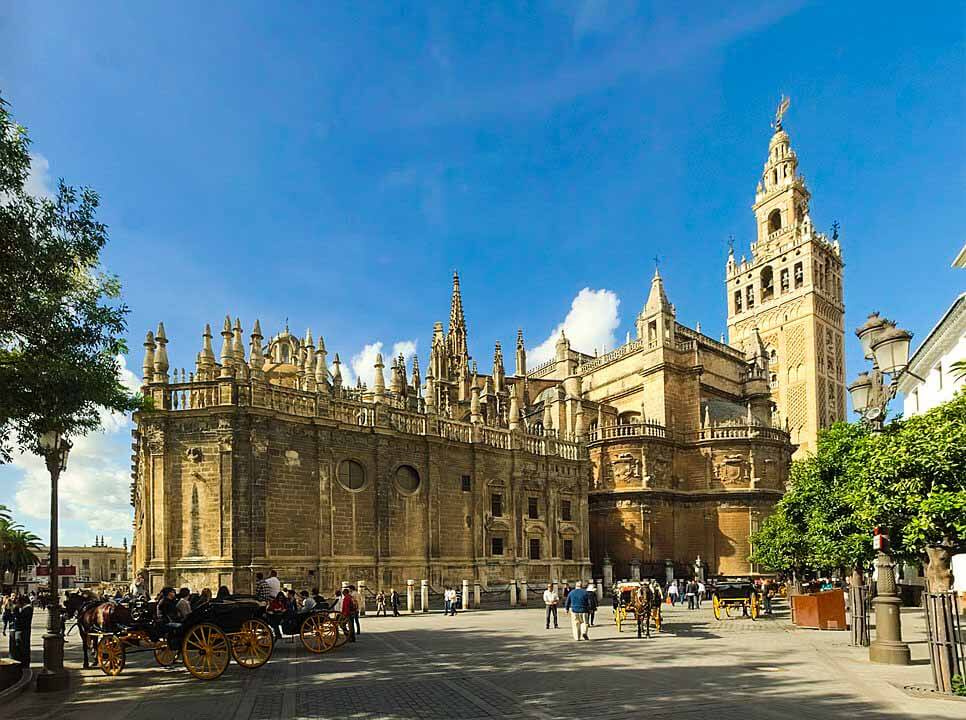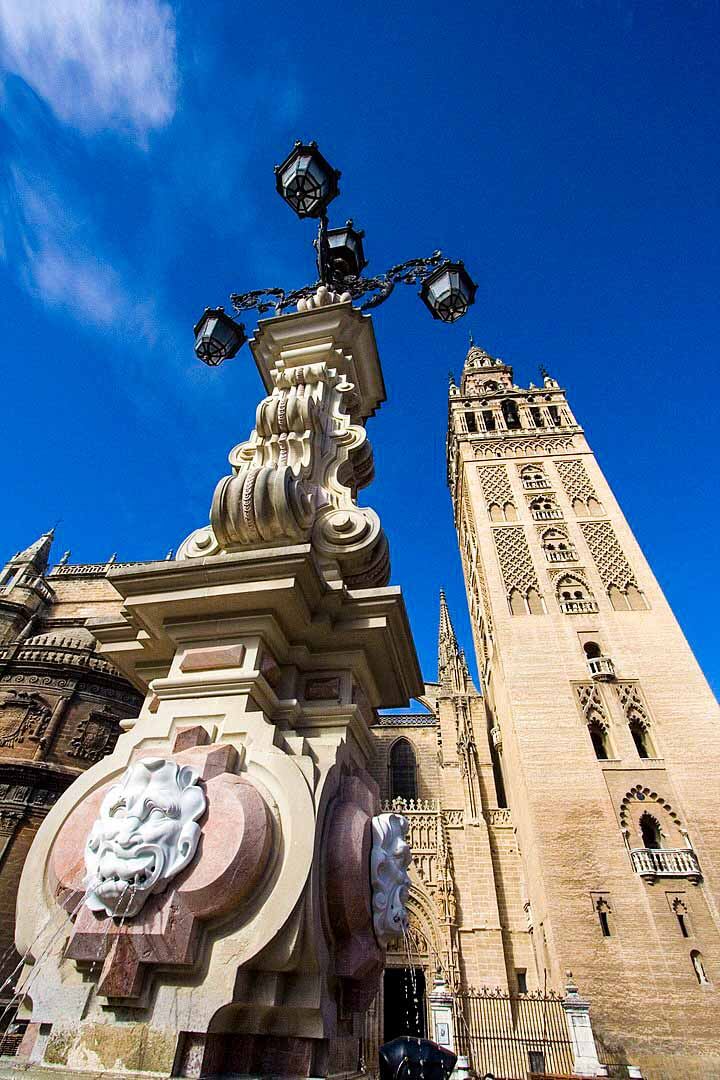Seville, Spain
Coordinates: 37.385833, -5.993056
Seville Cathedral, is a Roman Catholic cathedral in Seville, Andalusia, Spain.
It is the fourth-largest church in the world (its size remains a matter of debate) as well as the largest Gothic church.
Construction and history
Almohad mosque (1172–1248)
The Almohad caliph Abu Yaqub Yusuf ordered the construction of a new grand mosque for the city in 1172 on the south end of the city.
The new mosque was dedicated in 1182, but was not completed until 1198. It supplanted the one built between 829 and 830 by Umar Ibn abbas on the site of the present-day collegiate church of Divino Salvador as the main prayer hall in the city.
Larger and closer to the city’s alcázar, the mosque was designed by the renowned architect Ahmad ben Basso as a 113-by-135-metre (371 ft × 443 ft) rectangular building with a surface of over 15,000 m2 (160,000 sq ft), including a minaret and ablutions courtyard.
Its prayer hall consisted of seventeen aisles oriented southward, perpendicular to its Qibla wall, in the manner of many mosques of Al-Andalus, including the mosque of Ibn abbas.
“Christianized mosque” (1248–1434)
Shortly after Seville’s conquest by Ferdinand III, Yaqub Yusuf’s mosque was converted into the city’s cathedral.
Its orientation was changed and its spaces partitioned and adorned to suit Christian worship practices.
The internal space was gradually divided into chapels by constructing walls in the bays along the northern and southern walls.
Almost the entire eastern half of the cathedral was occupied by the royal chapel that would hold the bodies of Ferdinand, his wife and Alfonso the Wise.


















